Conduct a Make-or-Buy Analysis
Conduct a Make-or-Buy Analysis
The make-or-buy analysis determines whether a course should be made in house or outsourced and how much to spend (see Figure 4-3 on page 103). Our criteria were the size and location of the audience, availability of subject-matter experts, whether the content was proprietary to Rockwell Collins, and value to the organization.
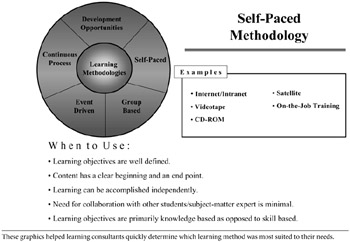
Figure 4-2a: Learning Methods .
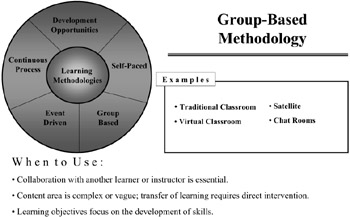
Figure 4-2b: Learning Methods.
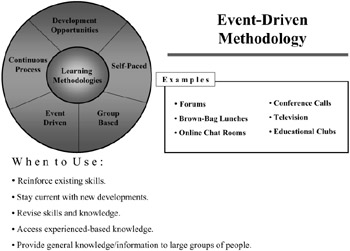
Figure 4-2c: Learning Methods.
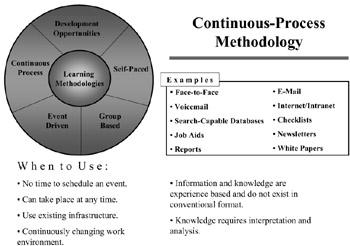
Figure 4-2d: Learning Methods.
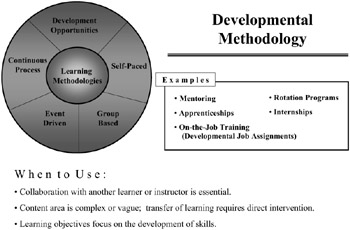
Figure 4-2e: Learning Methods.

Figure 4-2f: Learning Methods.
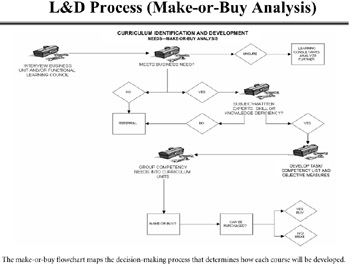
Figure 4-3: Make-or-Buy Flowchart.
For example, 2,500 employees needed training on electromagnetic interference (EMI) ”a problem that was costing Rockwell Collins more than a million dollars per year because of inadequate application of EMI fundamentals in the design phase. This easily justified the $400,000 the learning and development department spent on a custom course that helped to eliminate the problem in a matter of months.
On the other hand, if a core group of plant workers need to capture the knowledge of one retiring expert, it makes far more economic sense to use a methodology other than an expensive CBT. A key aspect of selecting the appropriate design methodology is obviously the cost per student hour of the training. Other factors are the location of the learning population and flexibility of the delivery method.
If our team decides to buy a course, we go to one of our existing vendors and make a choice. If our team makes a course in house, we use further steps to validate methodologies, style, core competencies, and effectiveness.
We contracted with an instructional-systems-design expert to craft a comprehensive curriculum-design and development standards guide that would provide focus, direction, and required "rules of engagement" for Rockwell Collins. The goal of the guide is to facilitate development of effective education and training programs.
It establishes the roles, responsibilities, and requirements for all those involved in curriculum development, management, and implementation at Rockwell Collins, including course managers, coordinators, instructors, subject-matter experts, support personnel, and others involved with instructional development and execution. It identifies the primary sources of instructional media used at Rockwell Collins, including detailed style guidance for use of type, font, style, color , and formats for media-specific presentations, along with design requirements, design templates, lesson file organization, and delivery methods and techniques.
For content that is developed in house, developers and SMEs are expected to adhere to these standards. Every vendor our team worked with from that point on was required to use our standards guide as a model for our content and to work with the Rockwell Collins team to ensure that the highest-quality design standards were applied.
Flowcharting these processes and defining standards are simple activities that clearly define for the entire organization how and why the learning and development department chooses particular content and delivery methods. They give our team guidance and verification that the choices we make have sound instructional principles behind them. These processes were also very important to the development of our learning consultants .
EAN: 2147483647
Pages: 124